2016.03.07
What happened before and after the First Sho Dynasty?
Ryukyu Kingdom seems to have had several dynasties early in its history, such as Tenson and Shunten dynasties, An old history document called “Chuzan Seikan” (中山世鑑) tells that there had been 25 kings who claimed to be descendants of Amamiyu (阿摩美久), the goddess of creation of the Ryukyu Islands, although these kings’ names are not known.
The 25th King of the Tenson Dynasty was usurped by Riyu (利勇) in 1186, but Shunten overthrew Riyu and became the king who established the Shunten dynasty of the Ryukyus in 1187. Two kings, Shunbajunki, and Gihon, succeeded Shunten. It is said that at that time pandemics and a great famine prevailed over the kingdom and about a half of the population died.
In 1259, King Gihon took responsibility of the grave situation, and gave his throne to his trusted treasurer, Eiso, who established the Eiso dynasty in 1260. Four kings succeeded Eiso — Taisei, Eiji, Tamagusuku, and Seii. At the time of King Tamagusuku, the Kingdom gradually split into three domains — Chuzan (Central Kingdom), Hokuzan (Northern Kingdom), and Nanzan (Southern Kingdom), which lasted from 1322 to 1429.
King Satto of Chuzan began sending tribute missions to the Ming Dynasty of China in 1372, and the other two kingdoms also started sending similar envoys.
Specifically what kind of items were exchanged between the Ryukyu Kingdom and Ming China? Why did the Ryukyu Kingdom keep sending tribute ships to China? Was it profitable or not? These questions will be discussed in the class.
Meanwhile, although Hashi was a small and short Aji (local chief) of Sashiki village in the southeast part of Okinawa Island, he was said to be very clever and wise, and became the King of Chuzan. He succeeded to unify the three kingdoms in 1429. Hashi also sent a tribute mission to Ming China, and the Chinese court bestowed him the royal family name “Sho”. Therefore, he began to be called Sho Hashi, establishing the first Sho dynasty. Five kings formed the Sho dynasty — Sho Chu, Sho Shitatsu, Sho Kinpuku, Sho Taikyu, and Sho Toku.
The founder of the first Sho dynasty, Sho Hashi, was engaged in international trade with neighboring East Asian, Southeast Asian, and the Pacific nations through peaceful and friendly diplomatic relations. He sent a memorandum with his envoys to these Asian nations stating that, “Our kingdom and your honorable nation will establish peaceful and friendly diplomacy upon which we will engage in international trade. As soon as the business transactions are over, we request the safe return of our trade ships be granted.”

Replica of the Bell of Bridge of Nations at Shuri Castle. The original is in the Okinawa Prefectural Museum.
As a result Sho Hashi’s kingdom became filled with foreign treasures. Sho Hashi’s 7th son, Sho Taikyu, was probably the greatest among his successors. In 1458, King Sho Taikyu ordered to cast a Buddhist temple gong, which was named “Bankoku Shinryo-no Kane” meaning “the Bell of International Bridge”.
The gong has a description that in summary reads, “The Kingdom of Ryūkyū is a splendid place in the South Seas, with close intimate relations with the three nations of China, Korea, and Japan, between which it is located, and which express much admiration for these islands. Journeying to various countries by ship, the Kingdom forms a bridge between all the nations, filling its land with the precious goods and products of foreign lands; in addition, the hearts of its people emulate the virtuous civilization of Japan and China.”
There is a record written by Portuguese traders who met Ryukyuan people in Malacca. “Portuguese buy women, but the Ryukyuans do not. The Ryukyuans are known as being honest, and don’t cheat each other; they do not buy slaves at all.”
The first Sho dynasty suddenly encountered crisis when a coup d’etat attempt occurred. The Lord of Katsuren castle, Amawari, attacked the Lord of Nakagusuku castle, Gosamaru, in 1458. Nakagusuku castle was built in order to protect the capital, Shuri, from a possible invasion from the north. Nakagusuku castle was the newest of all 300 castles in the Ryukyu Kingdom, but it was burnt down because of Amawari’s attack. Amawari’s coup d’etat failed when his troops tried to invade Shuri castle. Soon after King Sho Taikyu’s death in 1460, his young ambitious son Sho Toku succeeded his father in 1461. However, eight years later, the young King Sho Toku mysteriously suddenly died, which brought the end of the first Sho dynasty.
The registration period for the course of “Ryukyuan History and Culture” at NOP Okinawa Language Center in Mekaru, Naha City is going on. For more information, call OLC office at 098-943-1852, or E-mail OLC@okilc.org


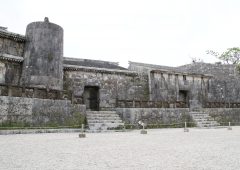 2024.07.07
2024.07.07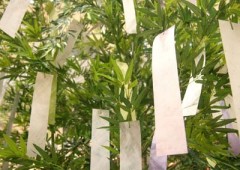 2024.07.02
2024.07.02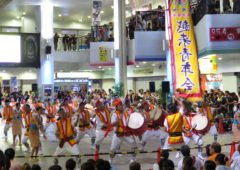 2024.06.11
2024.06.11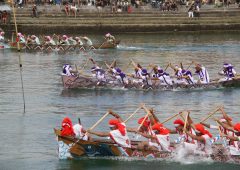 2024.06.03
2024.06.03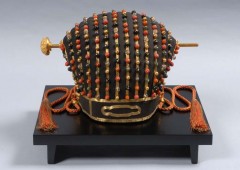 2024.05.02
2024.05.02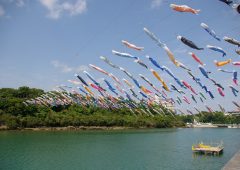 2024.04.26
2024.04.26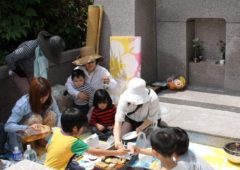 2024.04.04
2024.04.04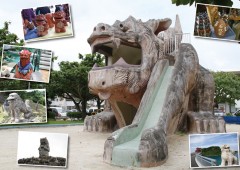 2024.04.02
2024.04.02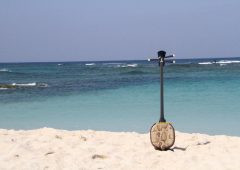 2024.03.03
2024.03.03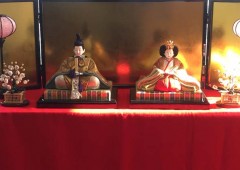 2024.02.26
2024.02.26






